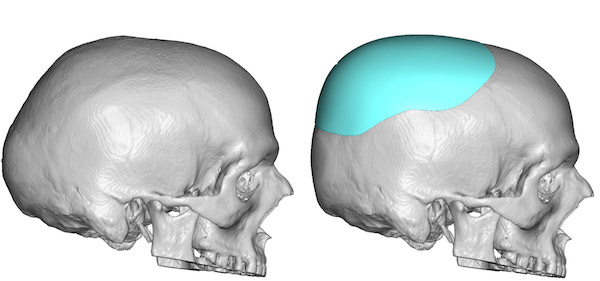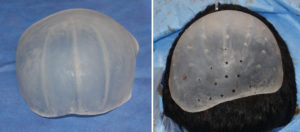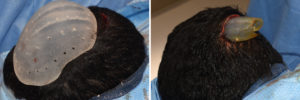Background: Aesthetic deformities of the skull disrupt a pleasing convexity to its shape. These disruptions can consist of excesses and deficiencies at various skull locations. High or long skull excesses tend to occur at the top and back of the head. Deficiencies are more ubiquitous and can occur anywhere on the bony surface of the skull from the forehead to the back of the head including the sides.
Patients that present with skull asymmetries usually have a combination of both bony deficiencies and excesses. Many such skull asymmetries are caused by cranioscoliosis, a congenital condition where the skull is rotated around a vertical axis. It is most commonly recognized and called plagiocephaly. It creates the dual skull excess/deficiency shape which most severely affects the back of the head. One side of the back of the head is flat which carries forward into the parieto-temporal area eventually creating a protrusion of the forehead on that side. The opposite side of the back of the head may have an excessive protrusion as well.
But some skull asymmetries defy the classic presentation of cranioscoliosis and have shapes that have no obvious developmental origin. The patient can well describe what us abnormal about their head and a 3D CT scan can provide the anatomic basis for it.
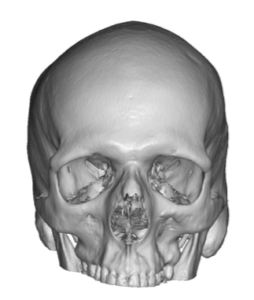
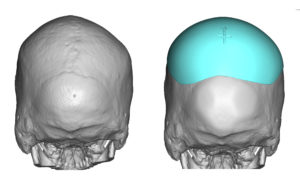

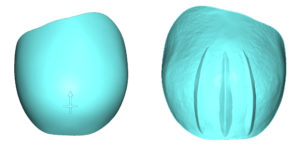
Case Highlights:
1) Some aesthetic skull deformities are a combination of both bony excesses and bony deficiencies.
2) In creating a better head shape bony prominences can be reduced at the same time as an augmentative custom skull implant is placed.
3) The key in combo skull reshaping is to be able to both reduction and augmentation through the same limited scalp incision.
Dr. Barry Eppley
Indianapolis, Indiana

